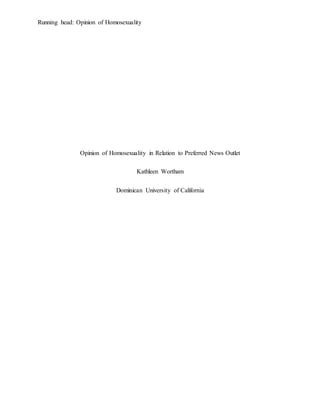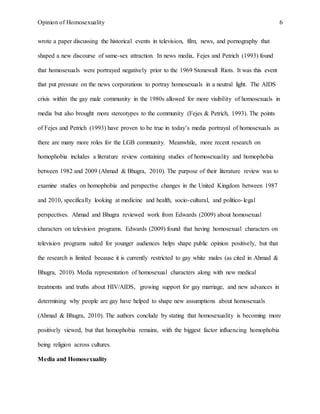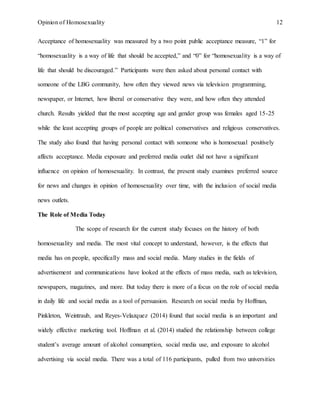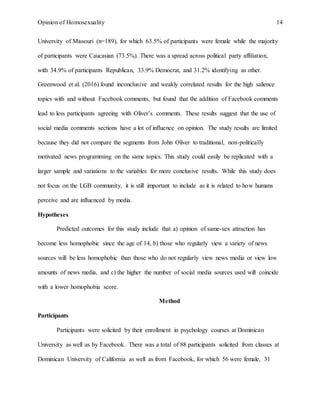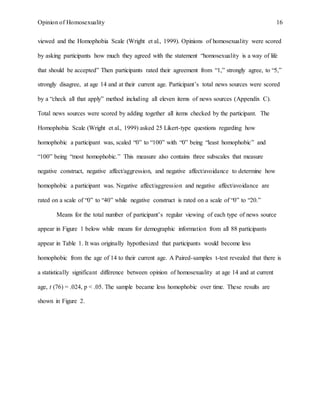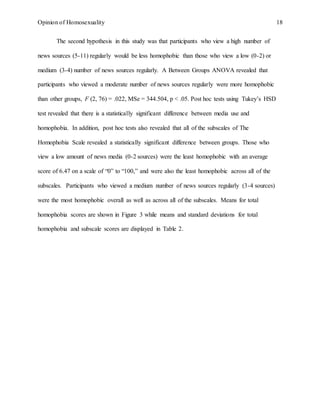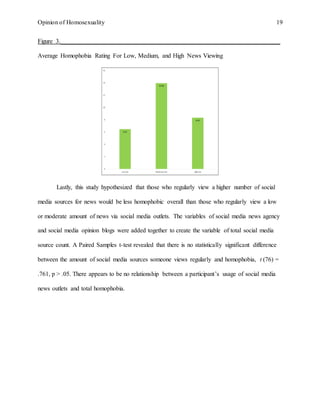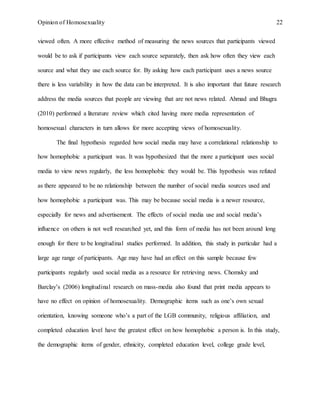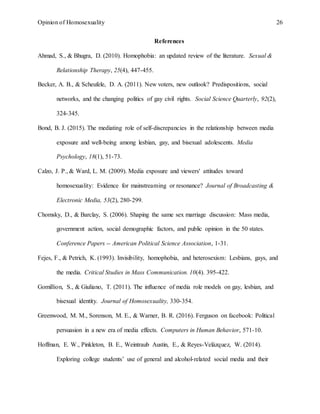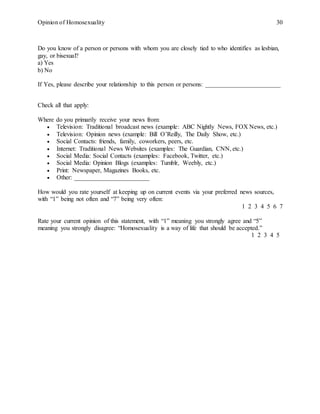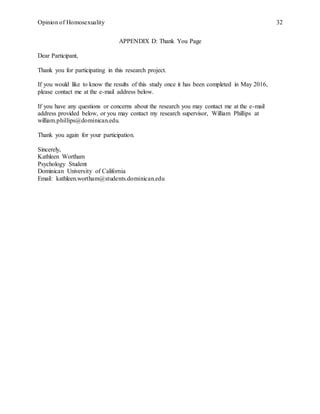This document summarizes a research study that examined how opinions of homosexuality have changed over time and whether preferred news media outlet is related to opinions. The study surveyed 88 people and found that participants reported decreased homophobia from age 14 to their current age. It also found that those viewing a moderate amount (3-4 sources) of news media had higher homophobia than those viewing low or high amounts. There was no relationship between social media use and homophobia. The document provides background on measuring homophobia and past research on media portrayals of homosexuality and their influence on public opinion.
